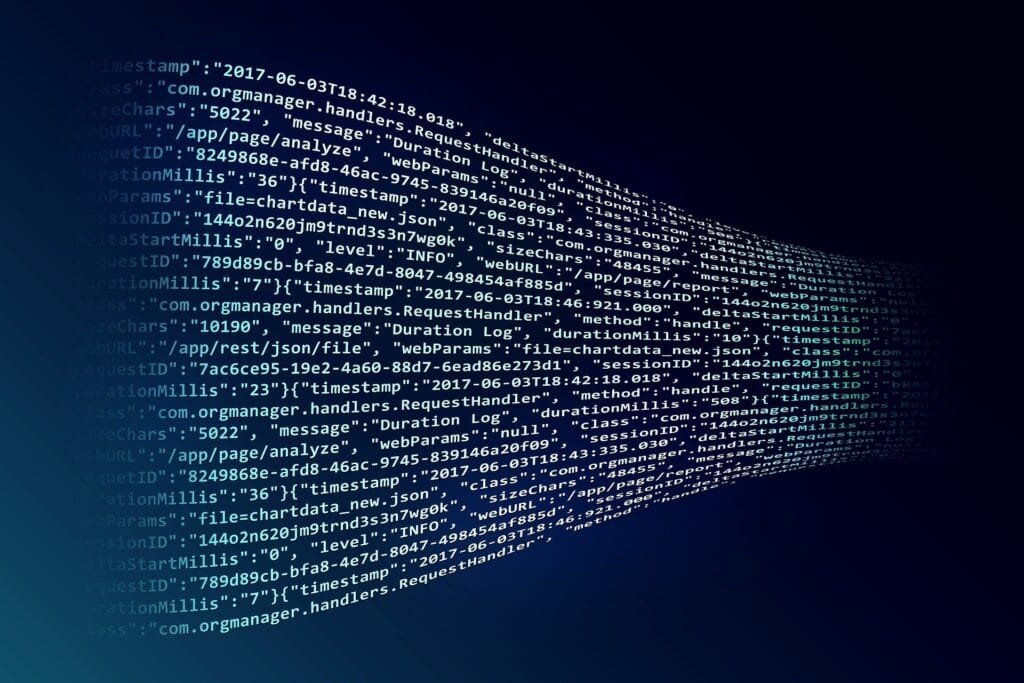In the era of cutthroat competition and rapidly shifting consumer demands, every business needs analytics to keep it aligned. Business analytics is done by experienced analysts based on the business needs, and their insights drive business better. There are many tools in the world to do business analytics and visualizations, but only a few are at par with what Python has to offer.
Released in 1991, Python had its shot to fame when the demand for Data Science, Business Analytics, and other such things was high in the early 2000s. All these domains required heavy knowledge of statistics and mathematics, which was naturally available to people coming from core degree backgrounds like mathematics, statistics, and economics. As they were not very proficient in programming, most of them chose to learn Python because of its easy syntax and incredible community support.
Today Python has a high share in Data Science, Data Analytics, Machine learning, and a lot more. A lot of businesses prefer to hire python developers. It has played a decisive role in helping businesses, so let’s have a look at some places where Python is used by businesses.
How to use Python for Business Analytics?
Using Python to Create Dashboards and for Business Intelligence
Dashboards are an important and effective way of visualizing large datasets. Python has helped businesses leverage dashboards, and with the business intelligence inside those dashboards, they can track all their things much better.
Dashboards and reporting solutions act as a single point of information that can be accessed by all stakeholders, and Python aids a lot in the development.
It comes with some great visualization libraries and numerical computing libraries that make working with data easier. Once the data is cleaned, you can pass it through the visualization code and get awesome visualizations that make presenting data a lot easier.
Business intelligence helps stakeholders know where the business is heading by opening the dashboard and understanding it well. Moreover, dashboards also help you utilize business data in the best possible way.
Using Python to aid in Machine Learning and Predictions for Your Business Analytics
Machine learning is a big boon for businesses that like to play safe. ML helps businesses predict what is right and what is wrong for them. ML algorithms are used in classification, clustering, and predicting various business outcomes.
Businesses can use Python and ML to cluster users and find their target audience before launching a marketing campaign. Such clustering can help them pitch efficiently and convert more leads to customers.
Moreover, the success of a new product can also be predicted before it is launched to the general public. ML algorithms can churn past data of various business products and predict whether a product will be successful or not, given its different ingredients.
Decision Making – Decision Science
Decision science is a branch of data and business analytics that deals with decisions. In this, operational data from the past is used, and it is fed into machine learning algorithms to find out whether decisions can be good or bad.
Companies that use decision science can make better and more informed decisions. Most decision science involves deep analysis to come to a decision with confidence. Decision scientists use Python and its libraries heavily to churn large amounts of data for decision-making.
Decision science is often called prescriptive analytics, and it helps companies to understand what, when, and why something will happen based on past data and trends. Moreover, it also designs the right course of action for something that may occur in the future.
Having known about how Python is used in business analytics, you still might want to know why your company should use Python. So, let’s find out that too.
Why Your Company Should Use Python For Business Analytics?
Exceptional Libraries
While dealing with large datasets, you need many different things and functionalities, and those are readily available with Python’s external libraries. It has the broadest range of libraries that are useful in Data Science, Data Analytics, Business Analytics, AI, and Machine learning.
Moreover, Python has a strong standard library with exceptional functionalities. Python’s Pandas library helps you load large datasets from different file types into Python in a data frame so that you can do all kinds of manipulation and exploratory data analysis on business datasets.
Pandas also come with inbuilt visualization support, and if you want extensive visualization, other Python libraries like seaborn, matplotlib, and plotly can be of great use.
Once you’ve had your way around your dataset, Python’s data science and machine learning libraries, like Scikit, Keras, TensorFlow, etc., can help you build models to classify, cluster, and predict based on your dataset and needs. Suppose you have the knowledge of analytical libraries like Pandas, Matplotlib, and NumPy, but you are looking to advance your career in the field of data science, you can pick up other libraries and make a rewarding career transition.
Easy to Learn
A big reason why Python is used extensively by companies for business analytics is the learning curve. Most people who do business analytics come from a non-tech background with solid business acumen, and for them learning Python is easy because of the English-like syntax and features.
Most business analytics projects don’t need OOPs and other such concepts to be implemented. If you know the basics of the language, you can start learning the libraries and get the work done.
Learning Python basics is relatively easy. You can get it done in a day or two if you spend time dedicatedly. Once that is done, you can jump to libraries for business analytics and data science in no time. Python is the most popular language nowadays. Hence there are tons of tutorials and blogs about teaching Python. No matter what you want to learn, there is a resource you can follow.
Also, Python has excellent documentation. If you don’t find anything to read on something, there will surely be enough documentation in Python to get you started with implementation.
Tons of forums backed by experienced Python developers are another good thing that facilitates learning in Python. They can help novices understand concepts more easily and help them solve any errors that can arise while doing something. Moreover, there are so many questions and answers in Python forums that you can get solutions just by searching for the correct terms.
Python is so easy to learn, that you can learn it whenever an urgent need arises. You just need problem-solving skills to work with Python. Combine the original documentation with a good course, and you are ready to publish your first python code. This benefit comes in handy when you switch teams, and the new team uses Python for analytics, you can quickly become a contributor by learning Python in one or two days.
Automation in Business Analytics using Python

Python is used heavily in automation, and if you want to create reports and dashboards fast, you should use Python. Python has many different automation packages, and they help you automate anything you want.
With Python, you can create data pipelines that clean and make the data in a structured way so that it can be used for business intelligence easily. Such data pipelines help you create data warehouses automatically by running in defined conditions. Moreover, data gathering and scraping can be automated to a large extent in Python.
Selenium and BeautifulSoup are Python packages that can help you scrape websites and applications for data. You can write scripts to gather data from a large number of pages, and you can get them done instantly.
Automation plays an important role in self-service business intelligence and analytics. If you create automation scripts for data management and visualization, you can have a self-service dashboard that evolves as the input data changes.
Support For Multiple Paradigms
Python supports multiple programming paradigms, and that allows you to choose what is best for you. If you are a functional programmer, you can use Python for functional programming tasks, and if you are an OOP lover, Python can help you achieve OOP functionalities easily.
While functional programming is a way to use functions in the best possible manner for creating high-quality code, OOPs make code modular, and it is a widely accepted approach. With Python, you can write both ways, but it is up to you which paradigm you choose. The programming paradigm you choose should solve your problems effectively, and it should not be based on current trends. Moreover, whatever code you write in these paradigms should be highly scalable.
Best In Industry Integrations
Whether you use any third-party BI service or reporting software which may aid in the sales outreach, Python has the best integrations. With its connectors and libraries, you can connect Python with any of your business databases, fetch data that is needed for analytics, and dump the data into multiple file types of your choice.
Whether your data resides in Excel files, databases, or any other type of storage, Python’s integrations can help you analyze the data quickly. You can use Python with leading BI software, and your Python code will help you have a data pipeline in between. This data pipeline will ensure that data is corrected before it moves into the BI service. Thus your BI will be accurate forever, and there will be no wrong analytics.
Wherever you work, there will be a Python integration, and that will help you a lot. By just learning that integration well, you can make your work a lot easier. For people coming from a programming background, data modeling and cleaning with python becomes a lot easier. In such cases, visualization tools like PowerBI provide APIs and integrations that allow people to load data through python code and clean them in the python code itself without touching PowerBI functionalities.
Conclusion
Coming to end, there are multiple reasons for you to use Python, and we have discussed them in the sections above. We have covered almost all the use cases as well as crucial factors of Python that make it the best solution for enhancing your business process and help you be on the Business Growth track.
But these are not the only reasons you should use Python. Once you start using Python, you’ll experience a lot more benefits than the ones that we have discussed here.
Read Next:
- Know all about: Branded Content Marketing
- How to effectively use HARO for better results
- Agile CRM Review: How good is this lean CRM software?
 Author Bio: Harikrishna Kundariya, a marketer, developer, IoT, ChatBot & Blockchain savvy, designer, co-founder, Director of eSparkBiz Technologies. His 10+ years of experience enables him to provide digital solutions to new start-ups based on IoT and ChatBot.
Author Bio: Harikrishna Kundariya, a marketer, developer, IoT, ChatBot & Blockchain savvy, designer, co-founder, Director of eSparkBiz Technologies. His 10+ years of experience enables him to provide digital solutions to new start-ups based on IoT and ChatBot.




















